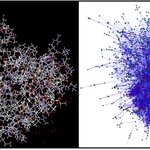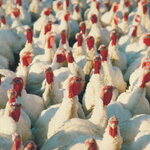Genetics & Molecular Biology

Not so long ago, geneticists considered the vast stretches of non-coding regions in DNA to be “junk,” nothing more than the remnants of our evolutionary history. If it wasn’t a traditional gene, and didn’t produce a protein, it wasn’t of interest to most scientists. Luckily, not everyone considered these regions of DNA to be junk. Some considered the junk DNA to be the dark matter of the genome. They believed that it must have some function, but no one had yet determined exactly what that function was.
One of these individuals is Dr Craig Pikaard at Washington University- St Louis. His…

With apologies to Jonathan Eisen for encroaching on his annoyance specialty, here is yet another case of science via press release.
Big hop forward: Scientists map kangaroo's DNA
Taking a big hop forward in marsupial research, scientists say they have unraveled the DNA of a small kangaroo named Matilda. And they've found the Aussie icon has more in common with humans than scientists had thought. The kangaroo last shared a common ancestor with humans 150 million years ago.
"We've been surprised at how similar the genomes are," said Jenny Graves, director of the government-backed research…

Researchers at the University of Utah are enrolling people in a new clinical trial that uses a patient's own stem cells to treat ischemic and non-ischemic heart failure. The one-year Cardiac Repair Cell Treatment of Patients with Dilated Cardiomyopathy (IMPACT-DCM) study will look at the safety of injecting Cardiac Repair Cells (CRC) and their ability to improve heart function.
Patients enrolled in IMPACT-DCM will have their own bone marrow cells drawn (about 3 tablespoons worth), which will then be grown in a culture to expand the number of cells that will help the heart muscle and…

A scientific team from the John Innes Centre and University of St Andrews has identified a key gene that was transferred from a Sicilian plant into a close relative in Britain, showing how genetic cross-talk between species can be important for evolution.
The researchers unravelled the remarkable history of an Italian interloper, a close relative of the common British weed Groundsel, that was first brought to the UK 300 years ago. In an amazing piece of genetic detective work, to be published in Science on Friday, they tracked down a small region of DNA in the British weed that came…

Molecular biologists have long operated on the principle that knowing the structure of a biological entity is critical for understanding how it works. Most famously, this was the premise behind one of biology's most iconic discoveries, Watson and Crick's model of the structure of DNA. Structure-function studies have been the foundation of much of molecular biology ever since.
Although the structure of DNA yielded almost immediate insight into an important biological problem, solving structures hasn't always resulted in a eureka moment. The same year Watson and Crick received their Nobel Prize…

'Tis the season for the local supermarkets to feature delicately balanced displays of gravy, stuffing mix, and cranberry sauce. Thanksgiving is almost upon us, and the centerpiece of the upcoming meal for 95% of families will be the traditional roast turkey.
Americans gobble up a lot of turkey: 267 million turkeys are sold in the United States each year. Considering all those turkeys, it may surprise you to hear that there's one that dominates the competition at the supermarket: the broad-breasted white turkey. Most of us have never eaten anything else.
For several decades researchers have…

Homosexuality in the animal world, sleep and daylight savings time, finger evolution at Tangled Bank
The latest Tangled Bank is up. Go visit Candid World to find some great, recent biology blogging.

Researchers at the Yerkes National Primate Research Center, Emory University, have discovered dental pulp stem cells can stimulate growth and generation of several types of neural cells. Findings from this study, available in the October issue of the journal Stem Cells, suggest dental pulp stem cells show promise for use in cell therapy and regenerative medicine, particularly therapies associated with the central nervous system.
Dental stem cells are adult stem cells, one of the two major divisions of stem cell research. Adult stem cells have the ability to regenerate many different types of…

A reaction essential for the biosynthesis of hemoglobin and chlorophyll, when catalyzed by the enzyme uroporphyrinogen decarboxylase, causes production in cells to be "increased by a staggering factor, one that's equivalent to the difference between the diameter of a bacterial cell and the distance from the Earth to the sun."
Without the enzyme? 2.3 billion years.
All biological reactions within human cells depend on enzymes. Their power as catalysts enables biological reactions to occur usually in milliseconds. But how slowly would these reactions proceed spontaneously, in the…

As Adaptive Complexity writes, last week's issue of Nature included the publication of West-African and Han Chinese individual genomes. The ability to sequence and analyze individual genomes for a reasonable price is a major technological advance of the past few years. But, you can't learn a whole lot about populations from the study of individual genomes. For that reason, I'm not sure you will ever see another individual genome published in a high-profile journal (unless it's a cancer genome).
Looking forward, keep an eye out for genome studies of entire multi-…